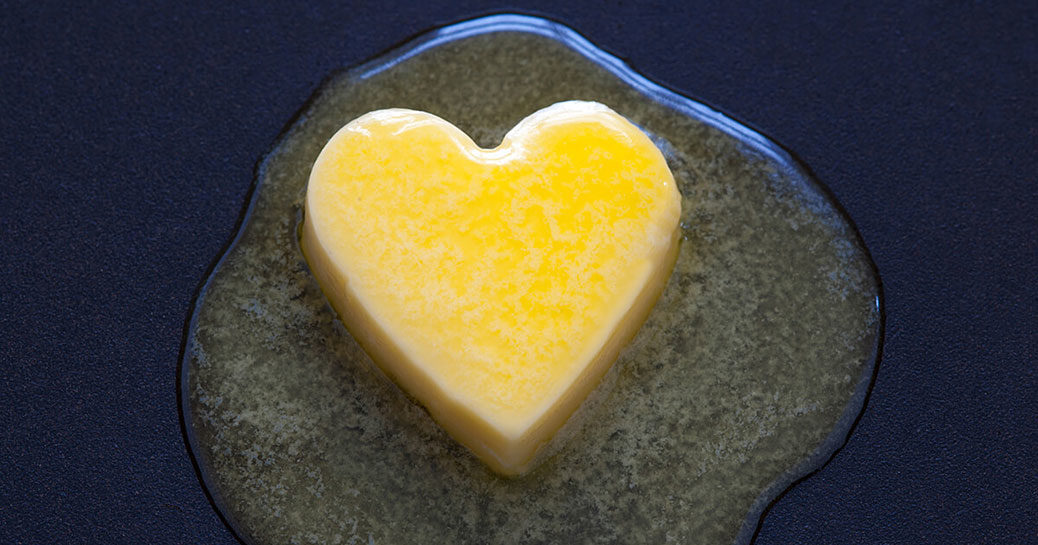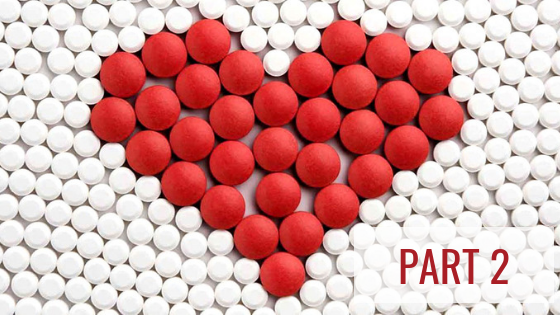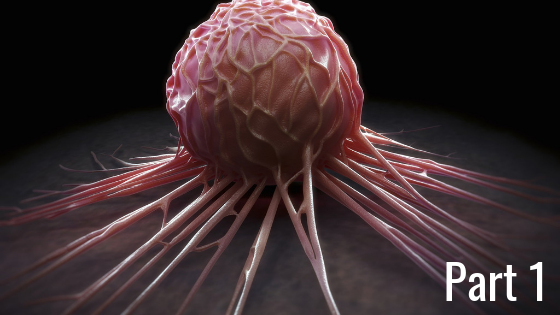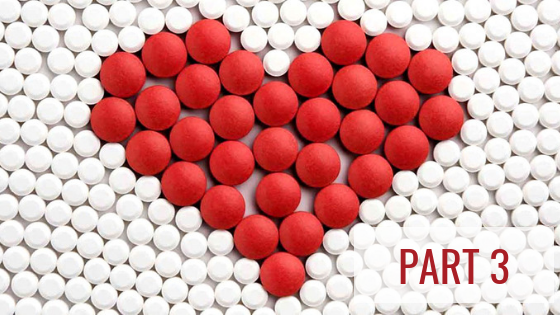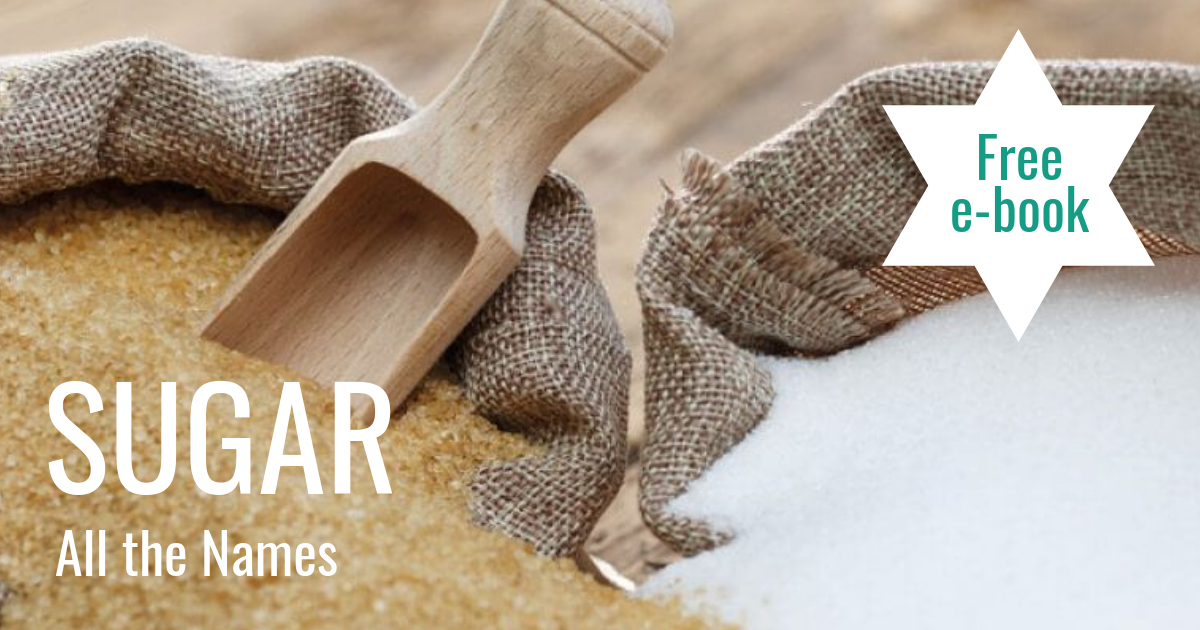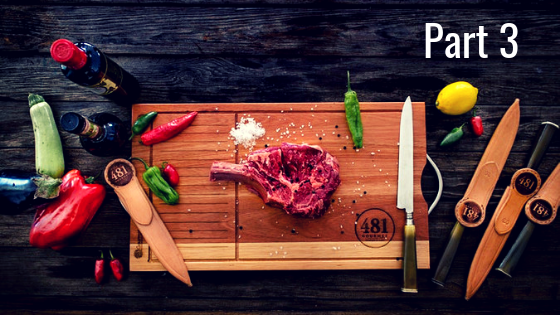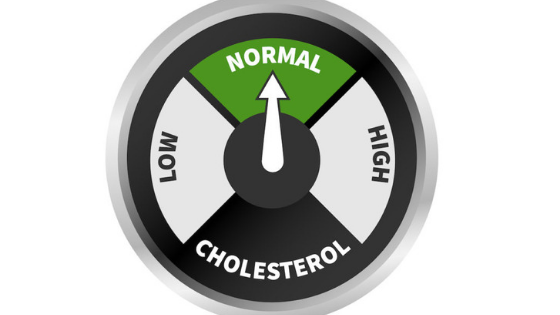The Butter Vs Margarine battle rages on. Margarine sales are falling and manufacturers are getting desperate. As hydrogenation continues to be outlawed in many countries, the ‘anti-butter movement’ has had to become more inventive. Margarine is now claimed to ‘lower cholesterol’, to be ‘heart healthy’ and to be ‘lower calorie’ than butter.
Vitamins have been added to boost sales. Millions of dollars are spent trying to make margarine taste just like butter. Little is told about the extraordinary processing involved to ‘create’ margarine. Why spend so much money and energy making a ‘butter-like product’ when butter already exists and does no harm?
The Story of Margarine
Margarine was invented in France in 1869 in response to Napoleon III’s quest to find a cheaper substitute for butter. The war troops needed it as a stable energy source. Butter was expensive and spoiled quickly. Margarine was originally manufactured from fresh beef tallow, then subsequently from vegetable oils.
Margarine sales peaked in the 1980s, coinciding with the vilification of saturated fat as the cause of heart disease. Butter was out. Margarine was in. In my ‘Eggs’ Blog, I describe the shameful series of events that led to the demonization of natural fats. Nutrition studies that formed the basis of our national dietary recommendations were fraught with controversy. Having been unable to link cholesterol to heart disease, the researchers turned their attention to saturated fats.
The researchers concluded that saturated fats found in milk and meat were dangerous, while unsaturated fats found in vegetable oils were beneficial. The recommendations were made in the belief that dietary fat generally, and saturated fat especially, caused coronary heart disease. The rest is history. For a deeper dive into nutritional history and the origins of our dietary dogma, I highly recommend reading ‘The Big Fat Surprise‘, by Nina Teicholz, a US-based investigative journalist.
Get the Facts about Fat
Since 1956, we have been informed to avoid a diet high in butter, lard, eggs, and beef. This information was misguided and confused. These foods all have MORE unsaturated than saturated fat. Fish contains lots of saturated fat, yet fish consumption is inversely correlated with heart disease. All natural fats contain saturated, mono-unsaturated and polyunsaturated fats in varying proportions. You cannot eat saturated fat without eating unsaturated fat.
Coconut oil is the single greatest food source of saturated fat.
Olive oil contains SEVEN TIMES the saturated fat of a typical sirloin steak (USDA Food Database)
The REAL cause of Heart Disease
Within the ‘lower your cholesterol’ instruction lay opportunity. Food manufacturers could now produce unnatural butter substitutes (margarine) and ride on these health claims perpetuated by governments. We now know that there has never been any scientific evidence implicating natural saturated fats in causing heart disease. The true cause of heart disease is inflammation, as a result of injury to the artery walls. What’s causing this injury? Mainly our unhealthy lifestyles such as smoking, high sugar diets, excess Omega 6 [from our ever-increasing consumption of highly processed seed oils e.g. sunflower oil], infections and others. Neither natural saturated fat nor cholesterol has ever been proven to cause harm.
In 2015, The US Government finally admitted they were wrong about cholesterol. They stated that ”The evidence shows no appreciable relationship between dietary cholesterol and blood cholesterol”, and that “cholesterol is not a nutrient of concern for overconsumption”.
The cholesterol is there to help. To repair.
Cholesterol is used as a raw material for the healing process when an injury is detected in the body. This is why cholesterol, calcium and several other molecules are found in scar tissue – including an injured artery. When cholesterol was observed within the plaque that blocks arteries causing heart attacks, it was assumed to be responsible for causing heart disease. This is as ignorant as blaming the fireman for causing a fire. The cholesterol is there to help. To repair. It did not cause the injury in the first place. We’d confused effect with cause.
Margarine | Factory
This is a complex chemical process starting with the extraction of oil from the seeds, often using solvents. The vegetable oils are then refined using various processes including neutralisation, bleaching, and deodorization. The oil is then hardened using methods such as hydrogenation, rearrangement or fractionation. Hydrogenation is a process of using heat and pressure to add hydrogen molecules to liquid vegetable oils. This gives margarine a harder consistency and extends its shelf life. Hydrogenation also turns some of the vegetable oils into trans-fats, which resemble saturated fat.
For further details, this article contains detailed information about these processes. This alone should put you off consuming margarine ever again.
It became a legal requirement for British margarine manufacturers to add vitamins to their recipes. This has certainly bolstered their ‘healthy’ propaganda. Many brands now have added vitamins, Omega 3’s and plant sterols (which claim to lower cholesterol). Others have added olive oil, on the back of the increasing popularity of the Mediterranean Diet. Some even add butter! Never mind the preservatives and colourings.
Butter | Farm
Butter – grass-fed butter in particular – is delicious and natural. It is high in Vitamin A and contains the other fat-soluble vitamins, D, E, and K, as well as other important micronutrients and healthy Omega 3 fatty acids. Butter is made by churning the fatty portion of cow’s milk. No other strange processes. Salt is occasionally added, and sometimes cream, to make it spread easier. Butter, like all dairy products, contains more saturated than unsaturated fat – but there is absolutely no association between saturated fat and cardiovascular disease. Butter may not be the easiest to spread if cold, but I see this as a minor inconvenience, as opposed to a deal-breaker.
So, butter is delicious, natural, minimally processed and not proven to cause heart disease. Need more convincing?
Deadly Trans-Fats
Trans-fats/trans-unsaturated fatty acids/trans-fatty acids are a type of unsaturated fat that occurs in small amounts in nature – it is found in milk or meat products. There is one thing that everyone in the nutrition field, myself included, agrees on – foods containing artificial trans-fats are absolutely the worst you could eat. Trans-fats increase the risk of heart disease by promoting inflammation. This has been supported by several studies, including this one. They are downright dangerous and rather than being minimised, they should be avoided altogether.
How to Identify Trans-Fats
Trans fats can often be found listed amongst the emulsifiers in food. Emulsifiers help prevent some of the constituent ingredients from separating out from each other. Trans-fats are also known as ‘partially hydrogenated oils/fats’ or ‘shortening’.
Reading the ingredients list on food products may help to identify foods which contain trans fats.
However, whilst UK food producers have agreed to cut trans-fats out of their ingredients, a number of foods still contain them, listed as ‘mono and diglycerides of fatty acids’, which can be found in many products including doughnuts, pastries, ice cream, margarine, and bread. Therefore, a food may be labeled as “0% trans- fat”, yet still contain trans-fatty acids from mono- and diglycerides.
Read The Label
A Typical Margarine’s Nutrition Label
Ingredients
Vegetable Oils in varying proportions (59%) (Rapeseed, Palm, Sunflower)
Water
Buttermilk (4%)
Salt (1.5%)
Emulsifiers (Mono- and Diglycerides of Fatty Acids, Sunflower Lecithin)
Preservative (Potassium Sorbate)
Acid (Citric Acid)
Flavourings
Vitamin A and D
Colour (Carotenes)
A Typical Butter’s Nutrition Label
Ingredients
Butter (milk), Salt
I know what I’d rather choose.
Trans-fats are found in many highly processed foods – including fried foods like doughnuts, and baked goods including cakes, pie crusts, biscuits, frozen pizza, cookies, crackers, margarines, and other spreads. The primary dietary source for trans-fats in processed food is ‘partially hydrogenated oils’.
Recall that these foods are also high in added sugars – a double blow.
It is important to emphasise that the main source of saturated fat is processed food, like those described above. Look at the chart below. This clearly shows that the main sources of saturated fat in the American diet is processed junk food. Butter accounts for only 2.9%.
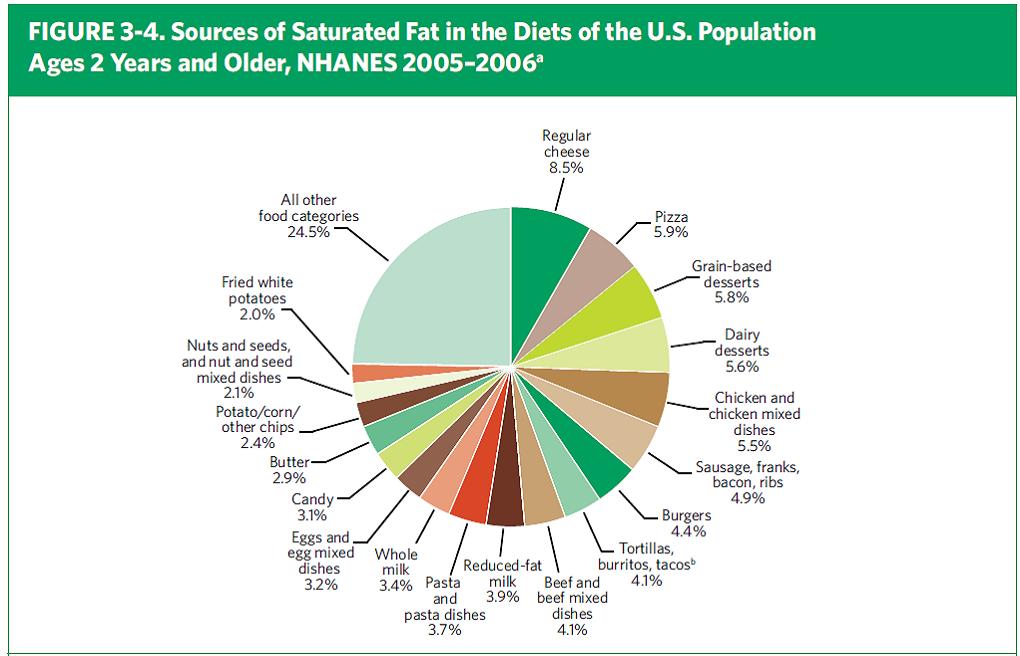
Source: USDA
You can now understand my frustration when I see people opting for the low-fat milk in a latte, while eating a blueberry muffin, or spreading a thick layer of margarine on a ‘low-fat’ scone. This behaviour, confused as it may be, stems from a lack of understanding of where the real culprits that compromise our health hide.
The main source of saturated fat is processed food.
This study, published in the journal of the American College of Cardiology in 2015, sought to investigate associations of saturated fat compared with unsaturated fats and different sources of carbohydrates in relation to Coronary Heart Disease (CHD) risk. It concluded… ”Our findings indicate that unsaturated fats, especially Poly-Unsaturated Fatty Acids, and/or high-quality carbohydrates can be used to replace saturated fats to reduce CHD risk.”. Even if I ignore the fact that it is an association (not causation) study, there are other issues – from its methodology to its representation of relative, rather than absolute risk.
The statistically significant and important points were that excessive consumption of trans-fats and carbohydrates from refined starches/sugars were associated with a higher risk of CHD.
It’s Not all Bad News
Margarine sales have been dropping considerably. I hope this article convinces a few more people that butter is by far the better and safer spread.

Source: USDA (X-axis represents the year)
Take Action
- Enjoy butter. Avoid margarine like the plague.
- Eat Real Food. Consuming processed junk food can have adverse effects on your health that are way beyond weight.
- Remember that if you add vitamins to garbage, it is still garbage.

